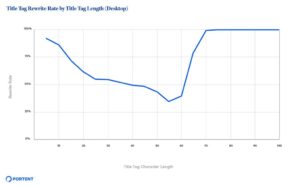Segmentation is key to delivering 1:1 experiences to consumers. However, poor segmentation practices can cause your segmentation efforts to fail. In this article, we identify five segmentation pitfalls and how to avoid them.
Become the best CRMer you can:
CRM Hack: measuring the right marketing campaign KPIs
How To: use loyalty data to power retention and reactivation
See how brands take their email deliverability to the max
Get inspired: great sports betting campaigns to follow
1.Relying on Static Segmentation
Consumer shopping behavior is constantly evolving. For instance, we’ve seen consumers shift to purchasing in larger quantities, trying new brands, and increasing online orders due to COVID-19. Therefore, if you’re relying on static segmentation, you’ll always be playing catch up. Static segmentation gives you a dated understanding of your customers and prevents you from marketing to them effectively. To meet consumers’ evolving needs, adopt a dynamic segmentation.
Dynamic segmentation uses real-time consumer data to continuously update consumer segments that shrink or expand as individuals move in and out of the segments. For example, with dynamic segmentation, a beauty brand might discover that its traditional beauty enthusiast segment is starting to split into “Korean beauty” or “indie beauty” cohorts based on a deeper understanding of behaviors, context, and needs.
When using dynamic segmentation, look for shifts in size, behavior, and engagement. Analyze customers based on their movement among segments and track how customers move from one segment to another over time. If you notice a change in consumer behavior, see if your current messaging still resonates with each segment, or you need to rework your approach.
Leverage dynamic segmentation tools with propensity modeling and machine learning capabilities to enable you to predict consumer behavior and identify which traits are most productive in converting, driving repeat purchase, and consumer engagement. Revisit your segmentation strategy periodically.
2. Going Too Granular
With consumers demanding 1:1 experiences, granular segmentation based on attributes such as lifestyle, propensity to purchase, and psychographic data can help you deliver personalized experiences. However, breaking your audience into smaller and smaller segments can sometimes lead to groupings that will be of little to no use to you. For example, segmenting an audience based on whether they’re shy or easy going when you’re selling apparel won’t help you better understand your audience’s needs.
While segmentation offers nearly endless possibilities for how you can look at your audience, don’t segment yourself to death. When segmenting your audience, each segment you discover is substantial enough to generate revenue and be profitable.
So, it’s crucial you understand your audience’s purchasing power and propensity to pay premium prices. The segment should be suitably different from other segments. Ask yourself if this segment will respond differently to marketing content. The segment should be reachable and targetable.
Use a segmentation tool that allows you to discover the most statistically significant differences among segments automatically.
3. Using Poor Quality Data
Segmenting your audience using inaccurate and outdated data is a quick way to get erroneous segmentation results and fail in your marketing. In fact, 95% of organizations see negative impacts from poor data quality, resulting in wasted resources and additional costs. Remember P&G’s marketing blunder with Gillette? Gillette accidentally sent razors to women and older men when intended for 18-year-old men.
Avoid segmentation related marketing mistakes by first reviewing your customer data to determine common errors within your database and implement a data quality strategy based on your insight. Leverage data enrichment tools to fill up data gaps, verify customer details and correct inaccurate information in your database. Use an enrichment tool that can give you access to granular information, such as the number of people in a household and their socio-economic situation.
Invest in tools that validate the accuracy of your data in real-time, clean information like list imports, and have an intuitive engine that prompts for data clarification. To consistently keep your data accurate, make data cleansing a regular process, and choose a data enrichment solution that can rapidly enrich, process, and analyze information. Also, develop practices around data remediation and data monitoring to maintain quality over time.

4. Forgetting the Customer Journey
Not incorporating your customer journey into your segmentation strategy is another pitfall you should avoid. Customer journey stage based segmentation enables you to know where in the buying process your customer is, identify touch points where they drop off and how to engage them with personalized offers and contextual messages. About, 33% of consumers are receptive to targeted ads that are contextually relevant to the site they are browsing.
To win with this strategy, map your customer journey across all physical and digital touchpoints. Ensure customer journeys are connected to all the different data sources and apply machine learning to spot common and uncommon patterns.
Consider leveraging a CDP with customer journey orchestration capabilities to provide simple journey configuration and deliver personalization at scale. Look for a solution that supports affinity-driven journeys, predictive modeling, and journey analytics.
5. Clinging to Basic Segmentation Strategies
In a world where consumers demand hyper-personalized experiences, mainly looking at attributes such as demographics, geographic and socio-economic data to segment consumer groups won’t help you deliver targeted messaging and communications.
Improve your segmentation strategy by leveraging predictive segmentation. This segmentation method leverages machine learning to group customers by their likelihood or propensity to exhibit a future behavior such as the probability that they will visit your store in the next 30 days, or churn from your subscription service. Thereby enabling you to understand each customer and how to market to them proactively. When using predictive segmentation, choose a predictive segmentation tool that leverages behavioral insights, builds goal-driven segments, and analyzes data to make recommendations that help you find and grow your target audience.
Your segmentation should also include some form of life events such as a new home, a birthday, or a job switch. This will help you understand customer intent and create strong messaging most likely apt to appeal to each customer’s situation.
About 50% of marketers consider life events as a new sales opportunity, while 70% state that life events provide a reason to engage with customers. Collect customer life events data through multiple channels- in real-time and enhance this with third party data to better inform retention campaigns. Make sure you have customer consent when collecting live event data.
Segment Right
Segmentation implementation is filled with pitfalls that can break your business. In addition to the solution presented above, improve your segmentation strategy by basing your segmentation on qualitative and quantitative research. This will help you to learn how consumers think, shop, and use your products. Additionally, set clear segmentation goals and identify opportunities for action after segmentation.
The post 5 Segmentation Pitfalls and How to Avoid Them appeared first on Post Funnel.




